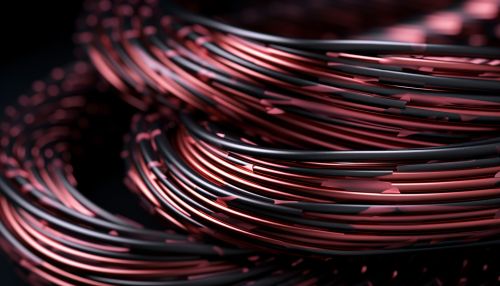Advances in Artificial Muscles for Robotics
Introduction
Artificial muscles, also known as electroactive polymers (EAPs), are materials capable of changing size or shape in response to electrical stimuli. These materials have been the subject of significant research and development in the field of robotics, where they are used to mimic the function of natural muscles and provide robots with more human-like movement capabilities.
History and Development
The concept of artificial muscles has been around since the late 20th century, but it wasn't until the early 2000s that significant progress was made in this field. The first generation of artificial muscles were based on electroactive polymers, which are materials that change shape or size when subjected to an electric field.


Types of Artificial Muscles
There are several types of artificial muscles currently in use or under development, each with their own unique properties and applications. These include:
Electroactive Polymers
Electroactive polymers (EAPs) are materials that change size or shape in response to an electric field. They are often used in robotics to mimic the function of natural muscles. EAPs can be divided into two main categories: ionic EAPs, which operate based on the movement of ions, and electronic EAPs, which operate based on the movement of electrons.
Shape Memory Alloys
Shape memory alloys are metals that can return to their original shape after being deformed, when subjected to a certain temperature. This property makes them useful as artificial muscles in certain robotic applications.
Piezoelectric Materials
Piezoelectric materials generate an electric charge in response to mechanical stress, and can also change shape when an electric field is applied. This makes them suitable for use as artificial muscles in certain types of robots.
Applications in Robotics
Artificial muscles have a wide range of applications in robotics. They are used to provide robots with more human-like movement capabilities, and can also be used in a variety of other applications, such as prosthetics and exoskeletons.
Humanoid Robots
Artificial muscles are often used in humanoid robots to mimic the function of natural muscles. This allows these robots to move in a more natural and human-like way, which can be beneficial in a variety of applications, such as personal assistance and healthcare.
Prosthetics and Exoskeletons
Artificial muscles can also be used in prosthetics and exoskeletons to provide individuals with enhanced strength or mobility. For example, a prosthetic limb equipped with artificial muscles can provide a more natural and functional movement than a traditional prosthetic.
Future Prospects
The field of artificial muscles is still in its early stages, and there is much room for improvement and innovation. Future research and development in this field will likely focus on improving the performance and durability of artificial muscles, as well as developing new types of artificial muscles with unique properties and applications.
